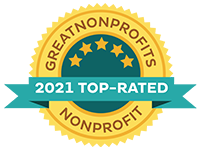Neuroscience and Brain Child Development
The technological advances in neuroscience allowed scientists to research and develop studies about the human brain, especially in the first six years of a child’s development. This period is a phase of greater plasticity, which is the ability that the brain has to change through the numerous connections made between the neurons for each new experience and learning.
It is through the plasticity that the brain alters its structure and operations, and in this way, it generates new knowledge and skills for a child’s life. With neuroplasticity, the brain is able to modify the physical structure, the chemicals and the function. This occurs through the experiences and stimulus encountered by the child in his or her interactions with the environment.
From the birth period, the child’s brain is developed in a fast and effective way. This period marks the beginning of the neuropsychomotor development, the learning of movements of the head, arms, hands, legs and feet. The child becomes able to touch and handle objects as well as capable in developing speaking skills through the interactions with the environment.
As the child interacts with the environment, new synaptic connections are formed in the brain, resulting in different learning and skills.
The first steps bring to the children a universe of curiosities and first discoveries. The movement becomes an instrument of interaction and socialization for children who, with the right stimulus (according to the age), have the opportunity to develop their coordination and physical skills. When moving, children learn about the world and necessities, so they are able to express in each new discovery their own reactions and feelings.
At two, the children gain the ability to freely move arms and legs and have grown in physical strength. They are able to socialize with other children and differentiate a variety of objects, such as indicating toys and materials of their own preference. This is a great opportunity to stimulate physical, manual and social skills with in-group recreational activities and the handling of small musical instruments. At this age, children begin to develop self-control thus it is a great opportunity for parents to teach what is right and what is wrong with simple language and with examples of what was experienced during the day. Learning to deal with frustration and developing boundaries with clear explanations are important lessons in this stage of life when the children learns to play in-group and get along with other children.
Three-year-old children develop fine motor skills, which are the ability to use and control the small muscles of the body, such as holding on a pencil to draw, handling stories books, cutting or tearing a paper and wearing or buttoning a shirt. At this stage, parents can stimulate the autonomy and self-care by encouraging the child to organize his or her personal belongings and by developing hygiene habits with his or her own body. The child’s language grows with the learning of new vocabulary and the acquisition of new phrases. For this reason, parents should encourage the child to talk and interact with them and with other children. Activities such as listening, telling stories and singing songs help in the development of the oral language.
When children are between four and six years old, they demonstrate interest in plays of make-believe and recreational activities with peers. This is the ideal stage for the apprenticeship of social skills such as empathy, cooperation, trust, solidarity and respect for others. At this stage, children learn to make decisions and to make choices, such as understanding what foods are best for their health, the importance of respecting and obeying rules and how to develop self-control and manage their own emotions.
The development of numerical skills and language abilities are more intensified during this period. Children are able to reason, solve problems, understand quantities and measures, develop hypotheses and argue using examples. Playing in groups or with rules are ideal for the development of social skills. Board games in which children needs to count the obstacles in order to reach the finish are effective strategies to improve mathematical competencies.
As we can see, children are born with a great potential of development and learning, especially during the first six years of life, because of the plasticity that the brain has. It resembles a sponge by managing to apprehend a range of information and knowledge.
The key to a healthy child development is in the importance of providing stimulus and learning environments so that the child can develop and improve his or her physical, cognitive, social and affective skills. These skills are improved through practice and are reinforced by personal experiences, such as events occurred in day care, pre-school, at home, in the park, in the nature or through the relationships with peers and adults.










